Bijin in brown kimono (untitled),
c. 1915-early 1930s
IHL Cat. #1616
Bijin with sake bowl (阿艶殿),
c. 1915-early 1930s
IHL Cat. #1798
Onshi no musume (恩師の娘)
c. 1915-early 1930s
IHL Cat. #1861
Life's Fallen Leaves (生命の落葉) c. 1915-early 1930s
IHL Cat. #1878
Raising a banner (untitled),
undated (c 1930s?)
IHL Cat. #1586
Biography
Igawa Sengai 井川洗厓 [also seen as 井川洗崖 and 井川仙厓] (1876-1961) [name sometimes seen romanized as “Ikawa Sengai”]
Sources: Wikipedia Japan https://ja.wikipedia.org/wiki/%E4%BA%95%E5%B7%9D%E6%B4%97%E5%8E%93 and as footnoted.
Born May 1st 1876 in Kamiokuwacho, Gifu City, Igawa was the son of Igawa Yohei.1 His real name was Igawa Jōzaburō 井川常三郎 and at some point he took the name Sengai as his artist name (gō).
Igawa was a painter, illustrator and print designer. He studied nihonga (Japanese-style painting) with Tomioka Eisen (1868-1912) and printmaking under Inano Toshitsune (1858-1907). He graduated from the Taiheiyōgakai Kenkyūsho, a private Western-style painting school operated from 1904-1929 by Taiheiyōgaka (Pacific Western-StylePainting Association), an organization which he later became a member of.
He served in the Russo-Japanese War and after his repatriation joined the staff of the newspaper Miyako shinbun, as an illustrator. While at the Miyako he worked on illustrations for the newspaper’s serialization, starting in 1913, of the epic novel by Nakazato Kaizan (1885-1944) titled Daibosatsu tōge 大菩薩峠 (Great Bodhisattva Pass). (See picture below). He also contributed a frontispiece to the first English translation of Nakazato's novel, also shown below. He is considered “one of the pioneers of book and magazine illustration”2 contributing to such popular magazines such as Kingu (King), Fujin gahō (Graphic Magazine for Women) and Kōdan Kurabu (The Storytelling Club) and creating illustrations for novels such as Gotō Chūgai’s (1868-1938) A Pair of Pines (Hiyoku no matsu), Lady Shizuka (Shizukagozen) by the female writer Hasegawa Shigure (1879-1941) and The Gold Demon (Konjiki Yasha) by Ozaki Kōyō (1868-1903).
Oneof his pupils, the children’s book designer, print maker and illustrator Hatsuyama Shigeru (1897-1973), recalling his days as one of Igawa’s students, told Oliver Statler: “The best training I got was when he [Igawa] was too busy to read the current novel. I’d read it for him and make pencil sketches, which he would finish up.”3
Asa woodblock print designer, Igawa contributed four prints to the 1926 print series Collected Prints of the Taishō Earthquake (Taishō Shinsai gashū) published by Zue Kenkyūka and designed a six-print series of war propaganda woodblocks in 1937 and 1938 titled Prints of the China Incident (Shina jihen hanga) (see picture above), but he was best known for his contributions to the 1924 series Collection of New Ukiyo-e Style Beauties (Shin ukiyo-e bijin awase) (see August-Moon shown below) and for his prints and paintings and illustrations of bijin, beautiful women.
 |  1938 |  |  |  |  |  |
 signed 洗厓 seal unread |  |  |  |  signed and sealed 洗厓, 1926 signed and sealed 洗厓, 1926 |  七十四叟洗厓 (old man of 74 years Sengai) seal unread, 1950 |  |
 |  signed 洗厓 seal unread |
1 Who's Who in Japan, published by The Who's Who in Japan Office, 1916, p. 169.
2 The Female Image: 20th Century Prints of Japanese Beauties, Amy Riegle Newland and Hamanaka Shinji, Abe Publishing Ltd and Hotei Publishing, 2000, p. 208.
3 Modern Japanese Prints: An Art Reborn, Oliver Statler, Charles E. Tuttle Company, 1956, p. 98
Wikipedia Japan https://ja.wikipedia.org/wiki/%E4%BA%95%E5%B7%9D%E6%B4%97%E5%8E%93
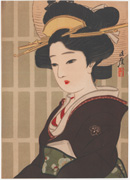
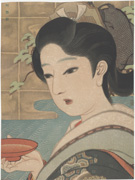
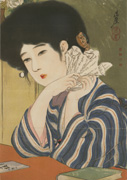
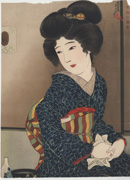


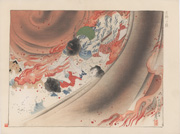
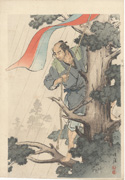

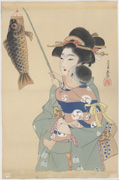

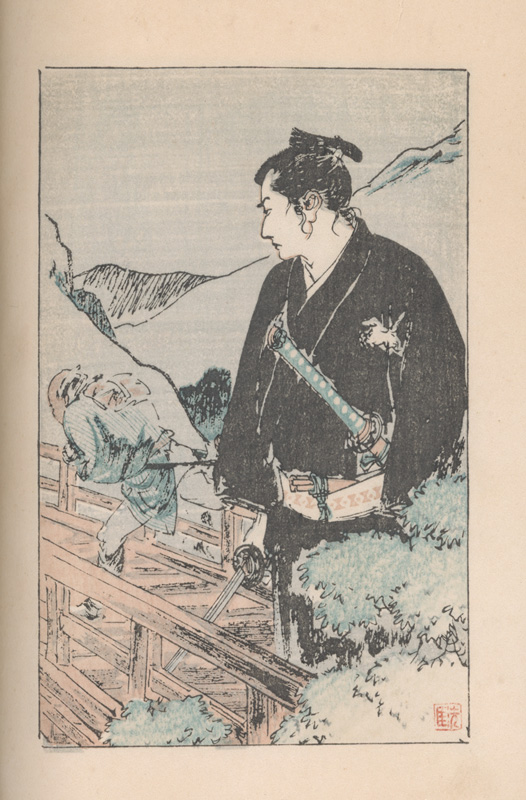
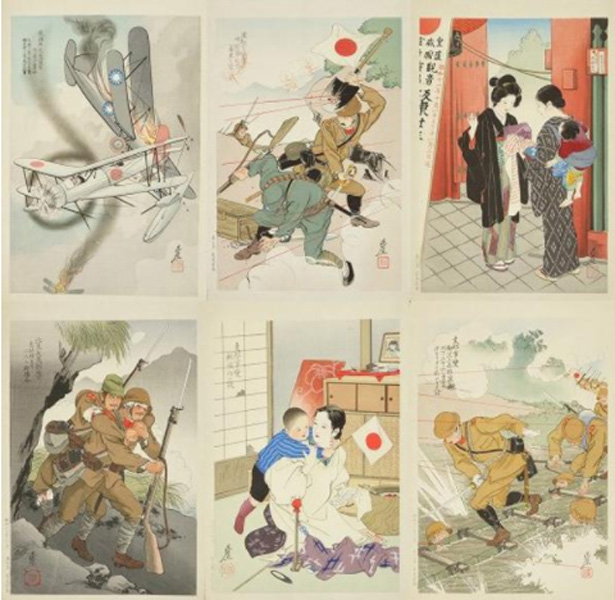
,Eighthmonth,fromS-452838a3a74d52c9.jpg)